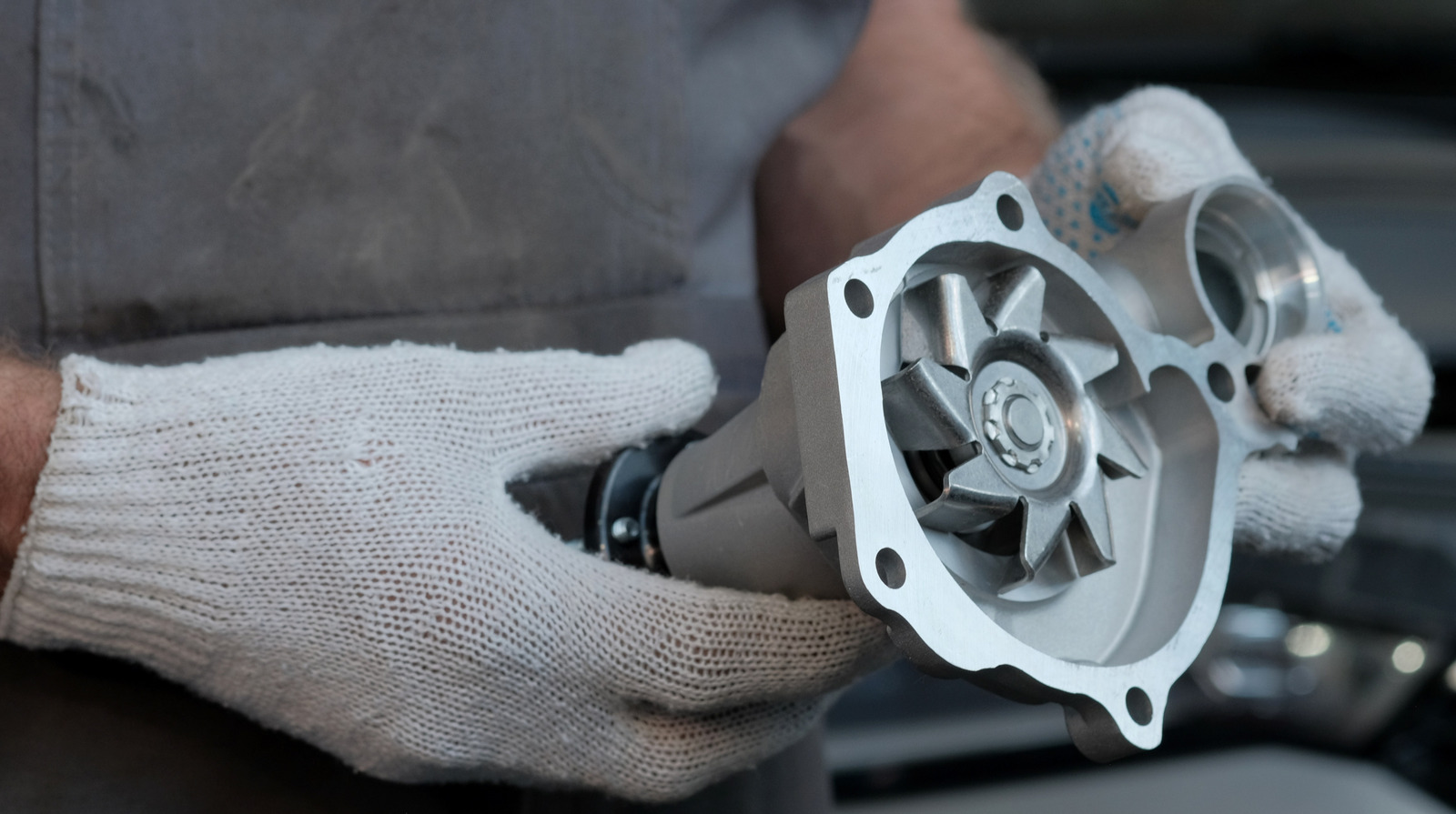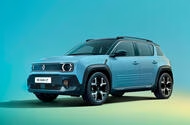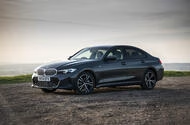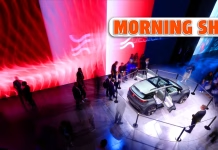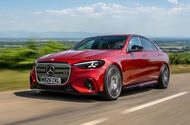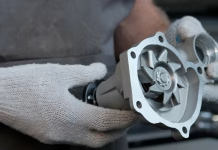Drivers of Change New Talent Awards Spotlight Rising Stars in Automotive Industry
 Latest edition will celebrate rising automotive talent; winners to be celebrated at a special event at Stellantis HQ in November
Latest edition will celebrate rising automotive talent; winners to be celebrated at a special event at Stellantis HQ in November
You now have extra time to submit your nominations for the Autocar Drivers of Change: New Talent awards, as the deadline for entries has been extended to Wednesday 24 September.
Held in association with the SMMT, the second running of the Drivers of Change awards will celebrate individuals who are either apprentices or in the first two years of their career, and the company that's doing the most to support them.
The goal of Drivers of Change is to celebrate the automotive industry as a place where you can have a thriving career irrespective of your background and to promote the industry as a great place to work for those from all different backgrounds.
For the New Talent edition, that can be as simple as having started and made an impact in a first role in the industry. We will name the stand-out stars, and the company that is doing the most to support new talent, in a ceremony at Stellantis's UK headquarters in Coventry on 13 November.
We encourage you to spread the word and consider nominating anyone from your wider organisation – no matter which sector of the automotive industry – who meets these broad criteria and has a compelling story to tell.
Entries are now open - submit your nomination here.
There will be no specific categories in which to enter and anyone named on our list can call themselves an Autocar Driver of Change. Earlier this year, 40 individuals were named in the inaugural Autocar Drivers of Change for their work mainly in DEI initiatives, in a ceremony at the SMMT headquarters in February.
This forms part of a refreshed calendar of events at Autocar. Each spring we will continue to host Autocar Great Women, which every other year will celebrate Rising Stars. Drivers of Change will follow a similar cadence in this new autumn slot, where it will remain in future years.
UFOs Why Firing Missiles at Unidentified Objects Raises Big Questions

Immigration and Customs Enforcement Detains Hundreds at Georgia Hyundai-LG Battery Plant

Electric vehicles need lower prices not more regulations says new Renault boss
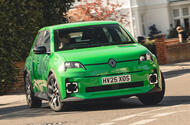 François Provost outlines his vision for the Renault Group in his first media appearance
François Provost outlines his vision for the Renault Group in his first media appearance
New Renault Group boss François Provost has said legislators should focus on how to reduce the cost of electric vehicles, rather than forcing manufacturers to sell them in ever-greater numbers.
The Frenchman was recently named CEO of the French car giant, succeeding Luca de Meo, who was instrumental in implementing a recovery plan that involved reviving the Renault 5 and 4 as small EVs.
Provost sat down with a select group of journalists, including Autocar, at the Munich motor show to outline his vision for the firm and answer questions on a range of topics – including the EU’s planned 2035 ban on the sale of non-zero-emission cars.
While the professional, slightly conservative Provost might seem a sharp contrast with the sharp-suited predecessor de Meo, they are similar in how they answer questions: Provost speaks with a brisk directness and a pleasant candour not so different from de Meo.
He launched immediately into the most important of declarations: “I’m a continuity man,” he said. “Our central task is to promote the Renaulution plan [introduced by de Meo in 2021], to build a strong line-up in Europe and then to renew it. Of course, we must be ready to react if internal factors change – but we have the Ampere and Horse divisions [spin-off firms that focus on EV and ICE development respectively] to help with that.”
When it comes to dealing with the Chinese model offensive in European markets, Provost pointed to Renault’s attempts to speed up its model development to less than two years and added: ”We are also capable of very strong and emotional designs and we have proved it.
“We are better at this than our competitors – especially the Chinese. We are also busy improving our customer engagement: we respect our dealers and we aim to bring our own special values to the customer experience.”
When asked about the EU CO2 targets, Provost gave a thoughtful response. “We should not focus on 2035,” he said, “even if it makes a nice hook for your headlines.
“The fact is that EV prices now are far too high for people – right now – and because of that, we are producing more carbon than we need to. We must make it clear that the industrial logic in Europe is wrong. What is needed is less regulation, which would allow car prices to be more affordable. Technology neutrality that pushes EVs forward should be the way.”
Asked what he was doing to push that message, Provost said: “First, I will focus on what I can control, so I’ll keep working on costs. Then I will go to the European authorities with my colleagues [other industry leaders] to enhance their sense of urgency. They should know that the job of stimulating the EV market cannot fall on car manufacturers alone: as well as the wrong European logic, we have issues with charging infrastructure and the price of electricity across Europe.”
Like de Meo, Provost makes it clear he believes generally in pursuing value over volume with car sales – which instantly opens him to questions about how Renault will cope with new-car discounting, rising across Europe. “We will follow the market,” he said, "but without doing anything crazy. Again, this is why I continue to push on reducing costs…”
Provost also said the firm’s Alpine-branded Formula 1 team, which will switch from using Renault-built to Mercedes powertrains next year, was safe despite its recent struggles.
“We will stay in F1,” he said. “We have good contracts and good sponsors, and I believe we have passed a tipping point. That’s not to say we are about to start winning, but I believe we now have stable management and a good power unit from Mercedes. I think we now have a chance to do better.”
Competition Win a Luxury Weekend in Paris with First Class Travel and Fine Dining
 Enter now to be in with a chance of experiencing an unforgettable French getaway for two...
Enter now to be in with a chance of experiencing an unforgettable French getaway for two...
To celebrate the launch of Renault 4 E-Tech electric, Renault is giving one lucky winner, and a guest, the chance to enjoy an unforgettable weekend getaway in Paris.
The prize includes return first-class Eurostar travel from London St Pancras, departing Friday 31 October 2025 and returning Sunday 2 November. On arrival at Gare du Nord, a private transfer will whisk you to a luxurious 5-star hotel, where you’ll enjoy a two-night stay with travel insurance included.
On Friday evening, you’ll dine in style at the Michelin-starred Restaurant Le Meurice Alain Ducasse. With €1,310 to spend on the night, you and your guest can indulge in some of the finest French cuisine Paris has to offer.
You’ll also take part in a traditional wine-tasting experience and have plenty of time to explore everything the City of Light has to offer.
For your chance to win this exclusive experience, enter via the link below. Terms and conditions apply*. Competition runs from 00:00 1 September to 23:00 30 September 2025. Enter the competition here.

* ONE ENTRY PER PERSON. UK RESIDENTS ONLY. OVER 18s. FULL T&Cs APPLY.
Racing drivers who never won a championship despite incredible talent

Plug-in Hybrid Company Cars Top Picks for Low Tax and Maximum Flexibility
 Low benefit-in-kind rates and an engine to fall back on? These are the must-have PHEV company cars
Low benefit-in-kind rates and an engine to fall back on? These are the must-have PHEV company cars
If you’re a business driver - or a potential business driver - looking to get the most bang for your buck, a plug-in hybrid company car might just be perfect for you.
Plug-in hybrids, or PHEVs, potentially offer the best of both worlds. On one hand, you get some of the lower tax benefits that come with electric cars. On the other, you still have the reassurance of a traditional petrol or diesel engine for those longer journeys. No range anxiety, no stress. Just flexibility.
PHEVs combine three key elements: a regular internal combustion engine, an electric motor, and a rechargeable battery. Unlike standard hybrids, plug-in hybrids have much larger batteries that you can charge up just like a fully electric car.
This means you can drive purely on electric power for around 30-75 miles depending on the car. Then, when the battery runs out, the petrol or diesel engine takes over, so you’re never left stranded.
For company car drivers, the big win here is lower CO2 emissions, which translate to seriously reduced benefit-in-kind (BIK) tax bills. To put it into perspective, many traditional petrol or diesel cars are taxed at around 27% of their value. With a PHEV? You’re looking at anywhere between 6% and 15%, depending on the car’s electric-only range. The further it can travel without using fuel, the less you’ll pay in tax.
Whether you’re clocking up motorway miles as a sales rep or looking for something a bit more executive as a CEO, there’s a plug-in hybrid out there for you.
European Carmakers Struggle as US Drivers Stick with Gasoline

Mercedes C-Class EQ Unveiled With 497 Mile Range and Luxurious Tech to Challenge BMW...
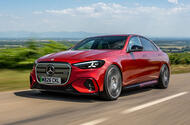
Autocar render shows what the new C-Class could look likeC-Class EQ to lead Mercedes' line-up expansion with GLC EQ underpinnings
Mercedes-Benz is preparing to expand its line-up from next year with the introduction of the electric-powered C-Class EQ.
The all-new model, which will be twinned with the recently revealed GLC EQ, will sit alongside a facelifted version of the combustion-engined C-Class.
The electric C-Class will be the main rival for BMW’s new electric 3 Series, the i3, which is due on the market at around the same time and with comparable specifications.
Like the GLC, the new C-Class will adopt the German brand’s new ‘Iconic Grille’ design that is being used as a differentiator between ICE and EV models as Mercedes moves away from the distinctive stylings of the first-generation EQ-badged electric models. Each model will wear its own bespoke interpretation of the grille, and Mercedes previewed the C-Class’s design at the Munich motor show.
The C-Class EQ is the second model based on the new MB.EA platform, following the GLC. The 800V electrical architecture will also be used by the E-Class EQ, which is due in 2027.
Mercedes’ new electric saloon is expected to grow beyond the 4751mm length and 1820mm width of the combustion-engined, MRA2-based C-Class, with a longer wheelbase and wider tracks contributing to a more spacious interior. Unlike today’s model, the C-Class EQ will be offered solely as a saloon – no estate version is planned.
Mercedes-Benz sources say rear leg room and head room are both significantly better in the new C-Class EQ – the increased interior space addresses one of the key criticisms of earlier EQ saloons. Boot capacity is also said to be slightly larger than that of today’s C-Class, with additional storage available in a frunk.
Drivetrain hardware is largely shared with the GLC EQ. It will be offered in configurations from a 335bhp single-motor, rear-wheel-drive model to a dual-motor 4Matic with up to 482bhp. The C-Class EQ will be offered with a 94.5kWh NMC battery.
While the GLC offers a top-end range of 435 miles (700km), Mercedes says the sleeker and more aerodynamically effi cient C-Class will arrive with a range of 497 miles (800km).
It will be able to charge at speeds of up to 400kW.
An AMG variant is also in development and set to go on sale in 2027. Using powerful axial-flux motors developed by UK-based Mercedes subsidiary Yasa, total output is tipped to exceed comfortably the 680bhp of the current plug-in hybrid C63 S E Performance.
Inside, the C-Class EQ adopts a cabin layout almost identical to that of the GLC EQ. It features the latest generation of Mercedes’ optional Hyperscreen, which covers the entire dashboard.
Speaking to Autocar at the Munich motor show about the GLC’s new interior, chief designer Gorden Wagener said: “It’s such a valuable piece. To get this level of luxury inside is amazing. When you look at the interior, it’s amazing what we have done there. That interior is almost S-Class in terms of technology.”
Warning Sounds Your Car Makes When the Water Pump Is Failing
